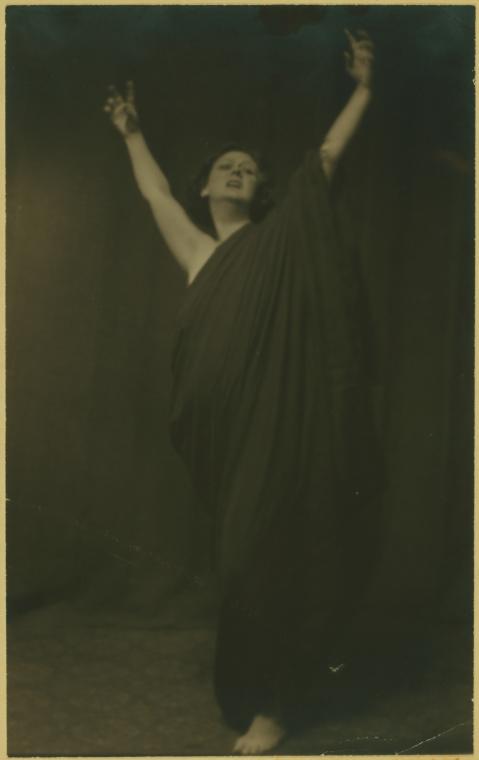100 Years (Or So) Ago in Dance: La Marseillaise
It's April 9 in Paris in the spring of 1916. The Battle of Verdun, one of the largest battles of World War I between the German and French armies and one of the longest running battles ever, has been raging less than 150 miles away since February 21.
Picture, if you will, the above photograph in color: the tunic a blood red, the dancer oozing charisma as she moves, defiantly embodying and accompanied by the stirring strains of the French national anthem, La Marseillaise. The audience before her is gathered for a war benefit, already primed to cheer for an artist it had applauded before, and who more importantly publicly sympathized with France in the war.
It's no surprise, then, that Isadora Duncan received a huge ovation for La Marseillaise. She was to repeat the performance again several weeks later, and a reviewer in the French theater journal La Rampe exclaimed breathlessly that she was "like a flexible branch that caresses the wind... Her dancing is more than stylization: it is life and movement in the way Greek sculptures including the Winged Victory, offer us divine symbols... Incarnation of our National Anthem or rather the French call to arms, she lifted souls to the sublime and left them trembling with excitement" (La Rampe, May 4, 1916, translated).
As far as influences on her dancing, Isadora referenced classical Greece in her writings about dance, named dances Iphigenia and Orpheus, and attempted to found a dance school in Greece before political uncertainties during the war ended her plans.
In her autobiography, however, she later claimed, perhaps unbelievably, that her dancing was really Irish in origin:
It has often made me smile—but somewhat ironically—when people have called my dancing Greek, for I myself count its origin in the stories which my Irish grandmother often told us of crossing the plains with grandfather in '49 in a covered wagon....
When they reached San Francisco, my grandfather built one of the first wooden houses, and I remember visiting this house when I was a little girl, and my grandmother, thinking of Ireland, used often to sing the Irish songs and dance the Irish jigs, only I fancy that into these Irish jigs had crept some of the heroic spirit of the Pioneer and the battle with the Redskins—probably some of the gestures of the Redskins themselves and, again, a bit of Yankee Doodle, when Grandfather Colonel Thomas Gray came marching home from the Civil War. All this grandmother danced in the Irish jig, and I learnt it from her, putting into it my own aspiration of Young America, and, finally, my great spiritual realisation of life from the lines of Walt Whitman. And that is the origin of the so-called Greek Dance with which I have flooded the world.
If you're interested in reading more about Isadora Duncan, here are a few biographies:
- My Life, by Isadora Duncan. A 1995 edition is also available.
- Isadora: A Sensational Life, by Peter Kurth.
- Done Into Dance: Isadora Duncan in America, by Ann Daly.
- Isadora: Portrait of the Artist as a Woman, by Fredrika Blair.
- The Search for Isadora: The Legend & Legacy of Isadora Duncan, by Lillian Loewenthal.
Read E-Books with SimplyE
 With your library card, it's easier than ever to choose from more than 300,000 e-books on SimplyE, The New York Public Library's free e-reader app. Gain access to digital resources for all ages, including e-books, audiobooks, databases, and more.
With your library card, it's easier than ever to choose from more than 300,000 e-books on SimplyE, The New York Public Library's free e-reader app. Gain access to digital resources for all ages, including e-books, audiobooks, databases, and more.
If you don’t have an NYPL library card, New York State residents can apply for a digital card online or through SimplyE (available on the App Store or Google Play).
Need more help? Read our guide to using SimplyE.

